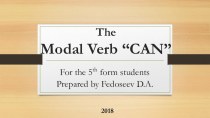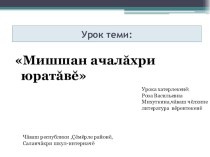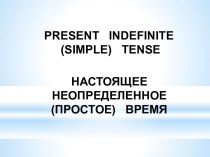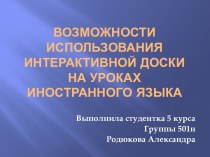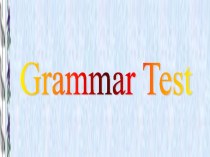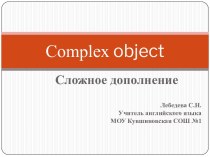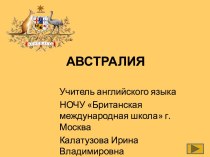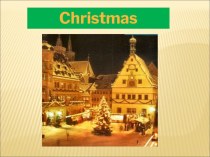- Главная
- Разное
- Бизнес и предпринимательство
- Образование
- Развлечения
- Государство
- Спорт
- Графика
- Культурология
- Еда и кулинария
- Лингвистика
- Религиоведение
- Черчение
- Физкультура
- ИЗО
- Психология
- Социология
- Английский язык
- Астрономия
- Алгебра
- Биология
- География
- Геометрия
- Детские презентации
- Информатика
- История
- Литература
- Маркетинг
- Математика
- Медицина
- Менеджмент
- Музыка
- МХК
- Немецкий язык
- ОБЖ
- Обществознание
- Окружающий мир
- Педагогика
- Русский язык
- Технология
- Физика
- Философия
- Химия
- Шаблоны, картинки для презентаций
- Экология
- Экономика
- Юриспруденция
Что такое findslide.org?
FindSlide.org - это сайт презентаций, докладов, шаблонов в формате PowerPoint.
Обратная связь
Email: Нажмите что бы посмотреть
Презентация на тему OE Morphology
Содержание
- 2. Typological classification (19th) A. SchleicherW. von Humboldtdeals
- 3. isolatingChinese and Vietnameseeach lexical or grammatical unit
- 4. agglutinatingTurkish morphs are ‘stuck’ together to form words. Each morph has a particular function.
- 5. All IE languages are Inflecting
- 6. Modern English has both analytic
- 7. OE morphology is different from that of
- 8. 2. Grammatical Categories of the Noun in
- 9. OE declensionsSTRONG : -a-stem-o-stem-u-stem-i-stem)WEAK (-(e)n- consonantal)ROOTBy the
- 13. 3. OE Adjective
- 14. Degrees of ComparisonSuppletive forms:Eald – ieldra –
- 15. 4. OE Pronoun
- 17. SE was used for far objects. The
- 18. DEFINITE: ȝehwa (every); ȝehwilc (each); ǣȝƀer (either);
- 19. 5. OE Verbal Grammatical CategoriesNumber (Sg, Pl)Person
- 20. (A) STRONG VERBSdivided into 7 classes according to vowel gradation (ablaut)now are called irregular
- 22. (B) WEAK VERBSWhile there were 4 classes
- 24. II ClassThese originally had the suffix *-ōja
- 25. IIIClassthe suffix of the past and the PII is joined on to the root
- 26. (C) Preterite-Present VerbsHistorically, Preterite-Present Verbs are strongPP
- 28. (D) Anomalous Verbs
- 29. + be̅on ‘to be’ suppletive paradigm The
- 30. Скачать презентацию
- 31. Похожие презентации
Typological classification (19th) A. SchleicherW. von Humboldtdeals with grammatical structure of the languagesLanguages are divided into:IsolativeAgglutinatingInflecting

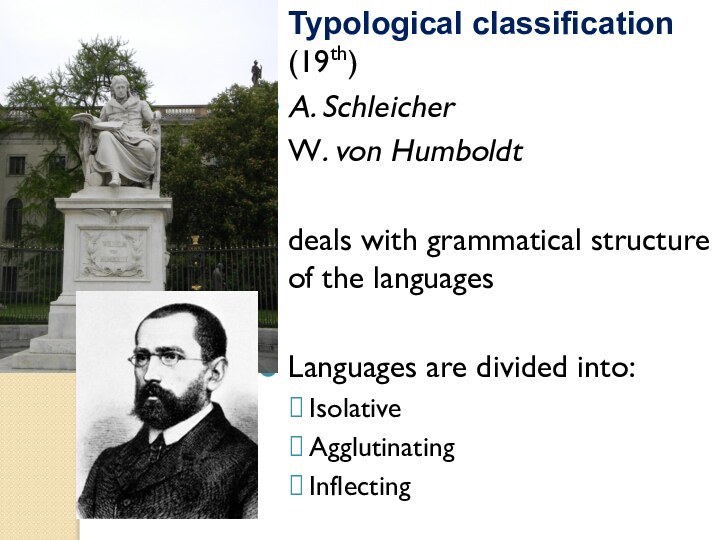
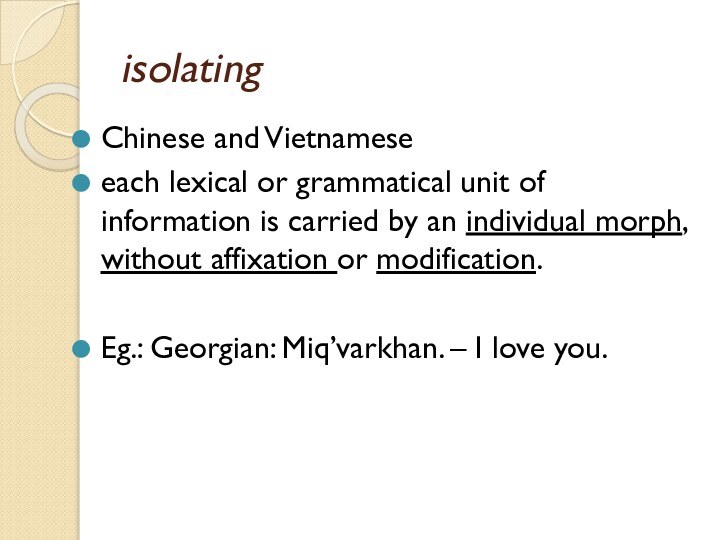

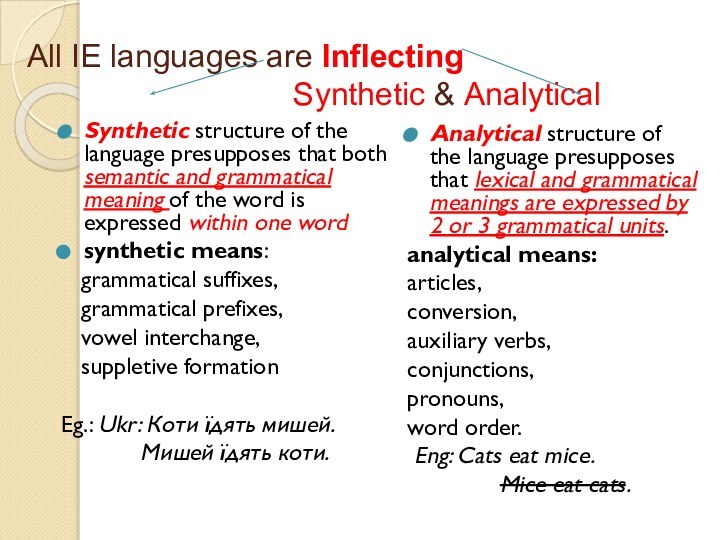
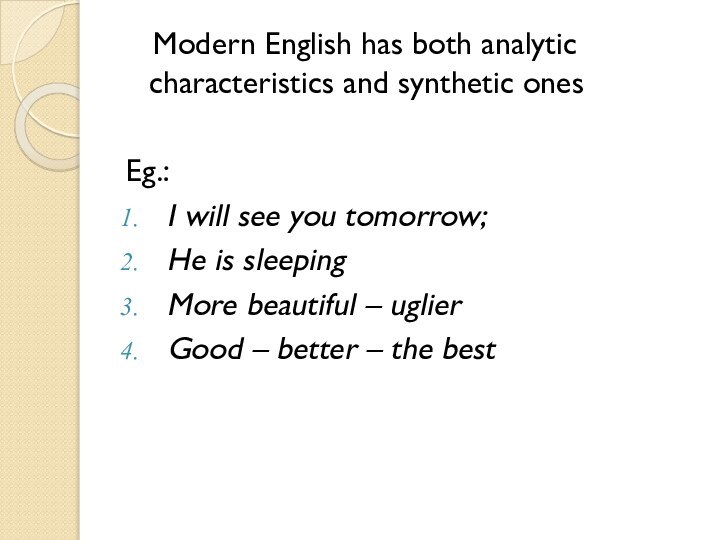

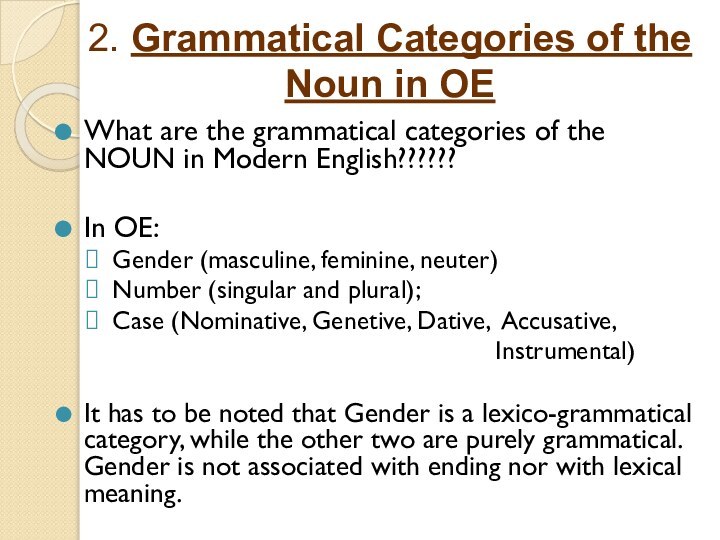
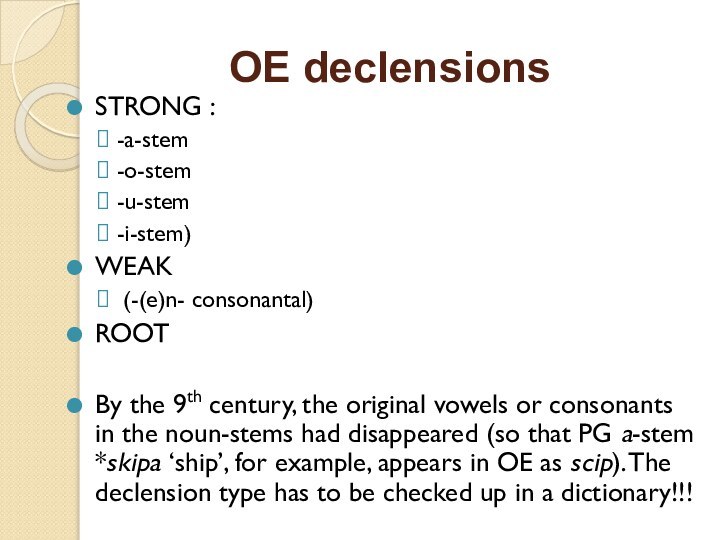
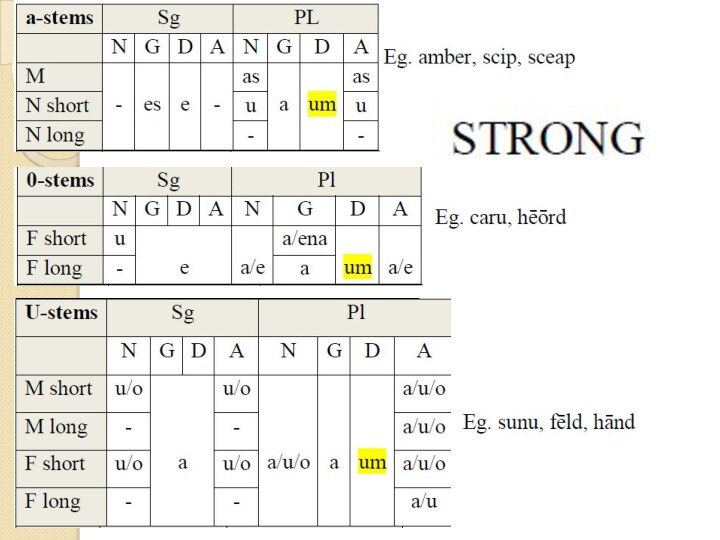
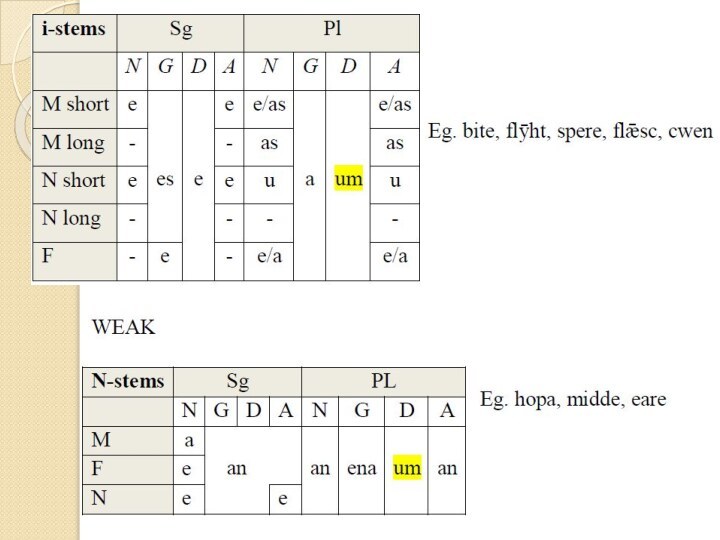
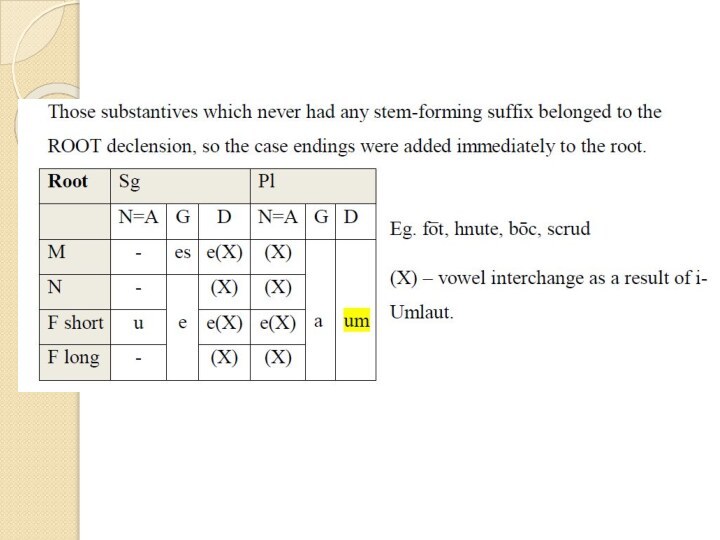
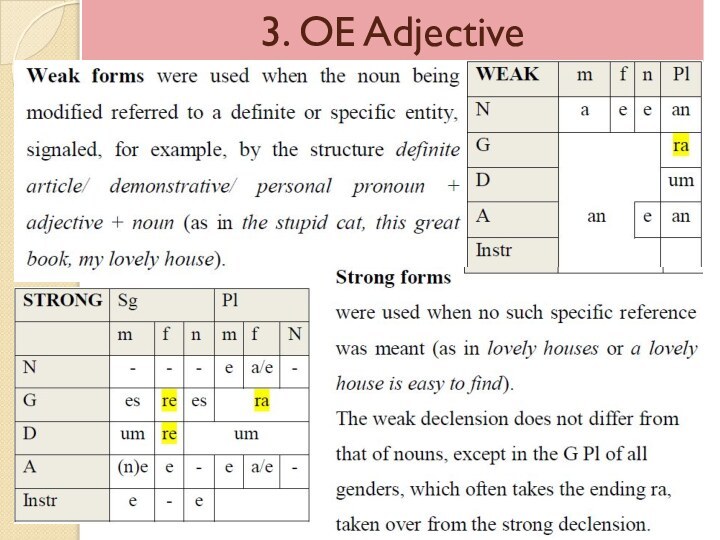
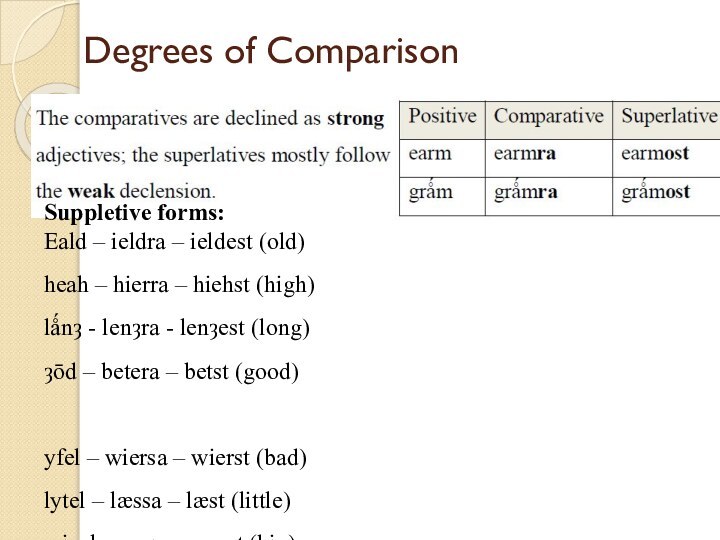
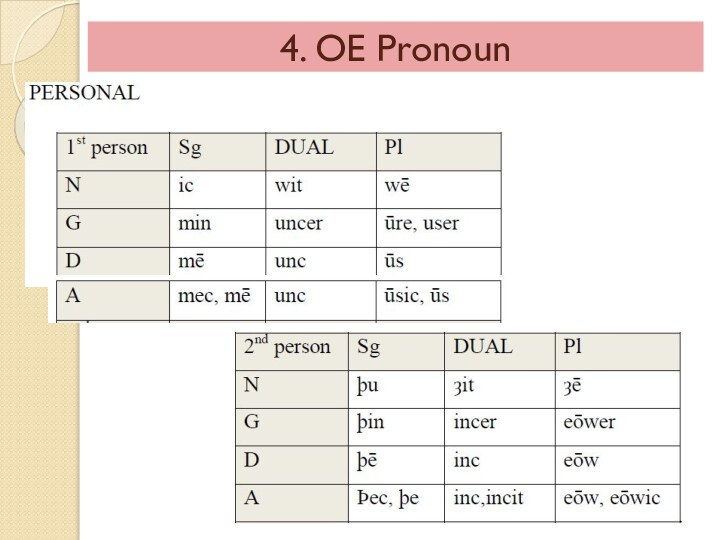
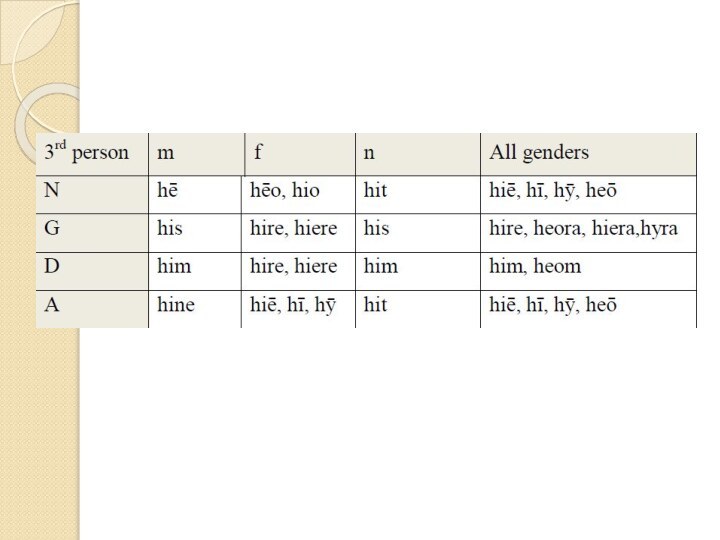
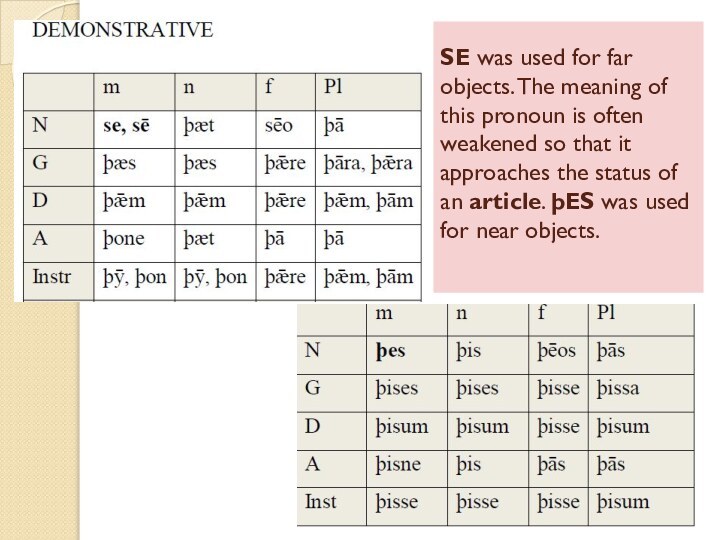
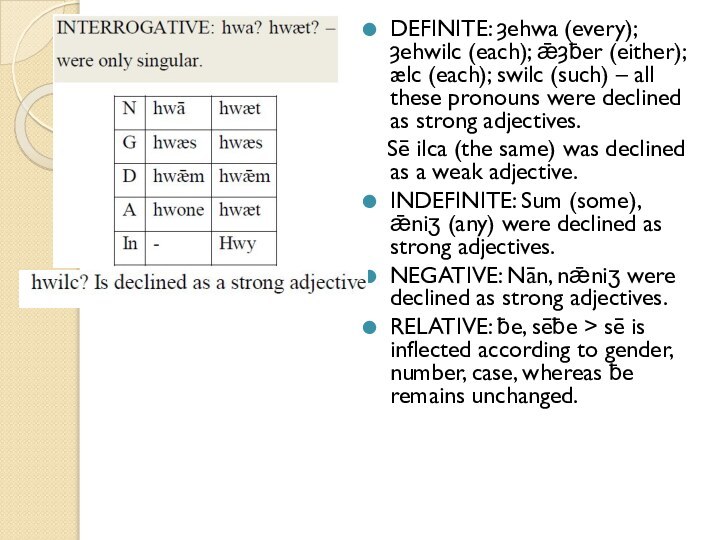
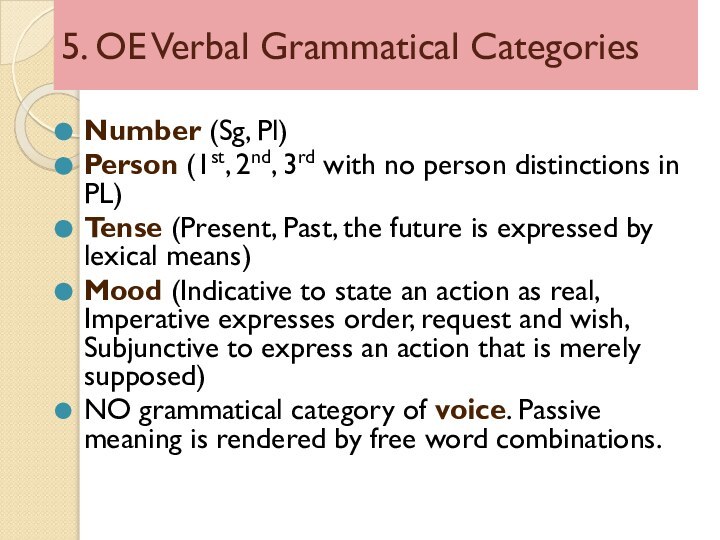
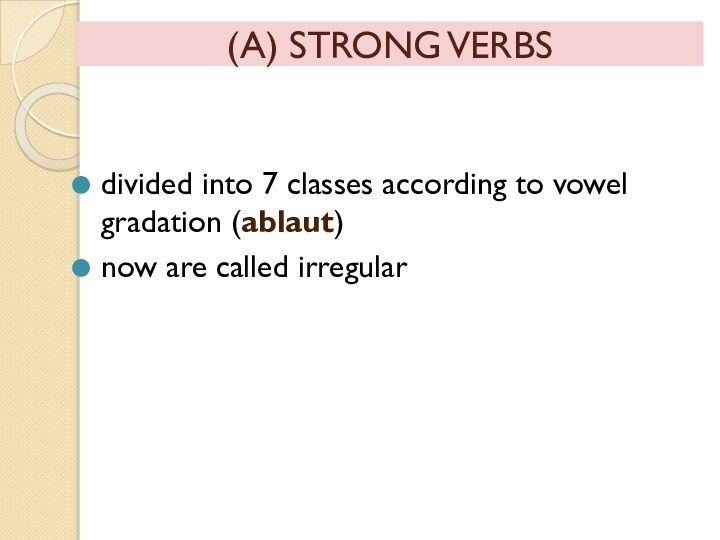
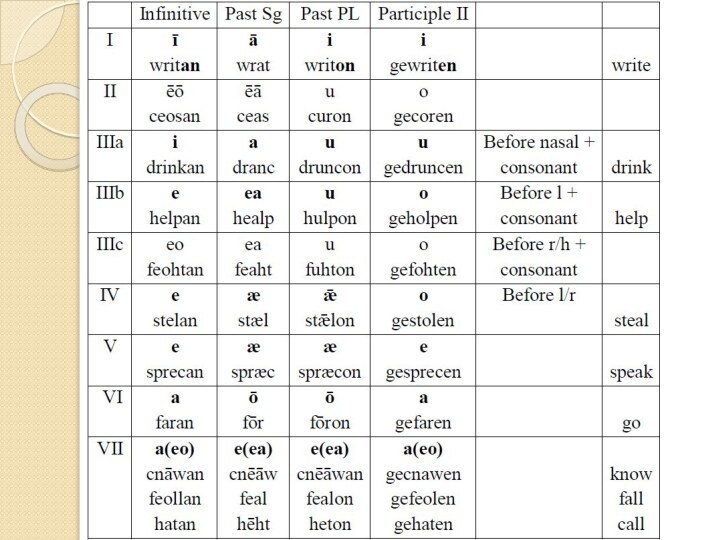
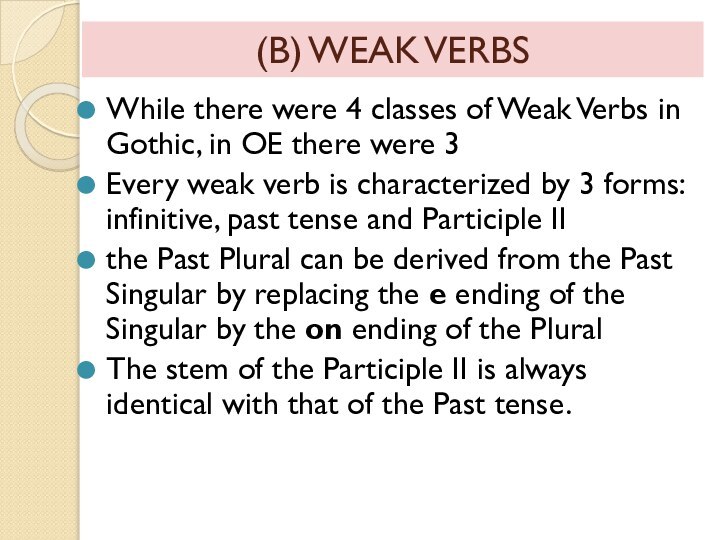
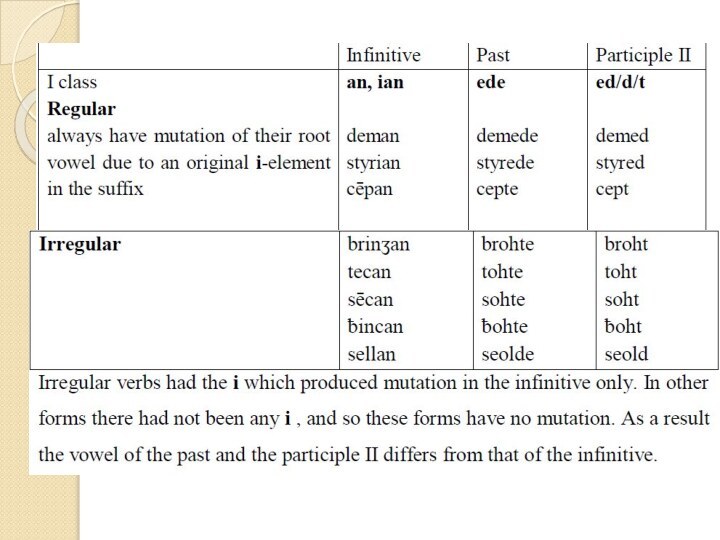


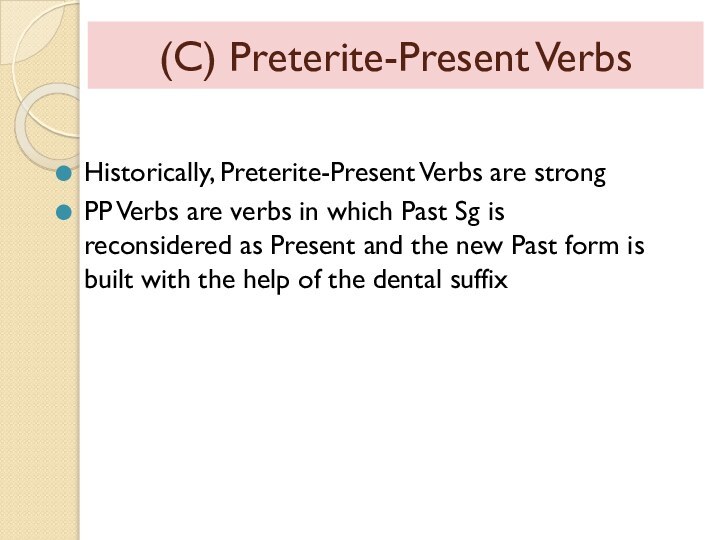
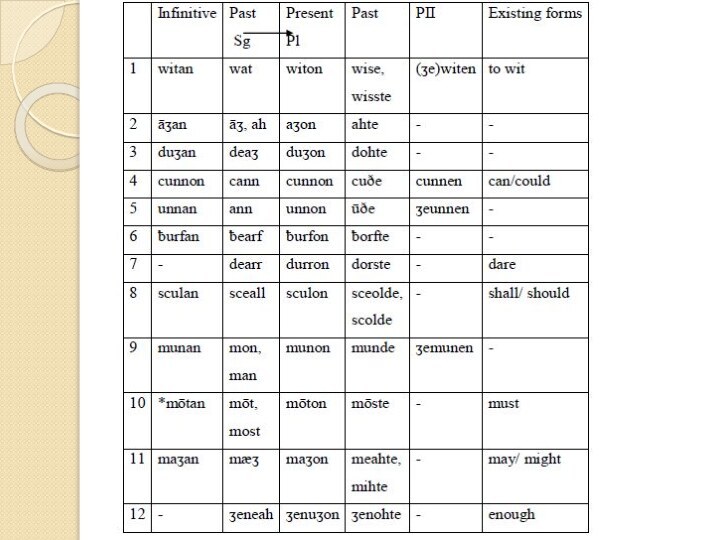
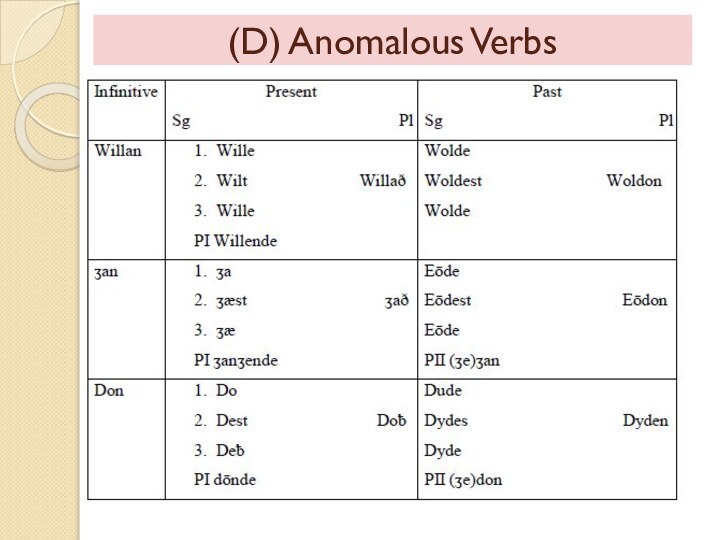
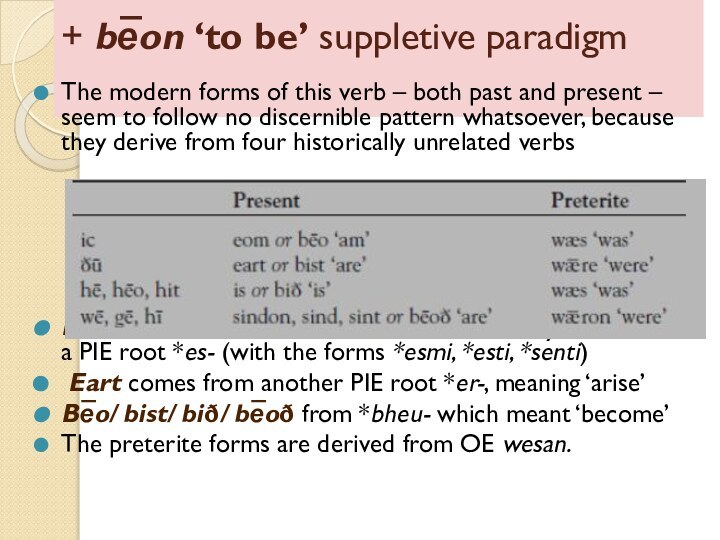
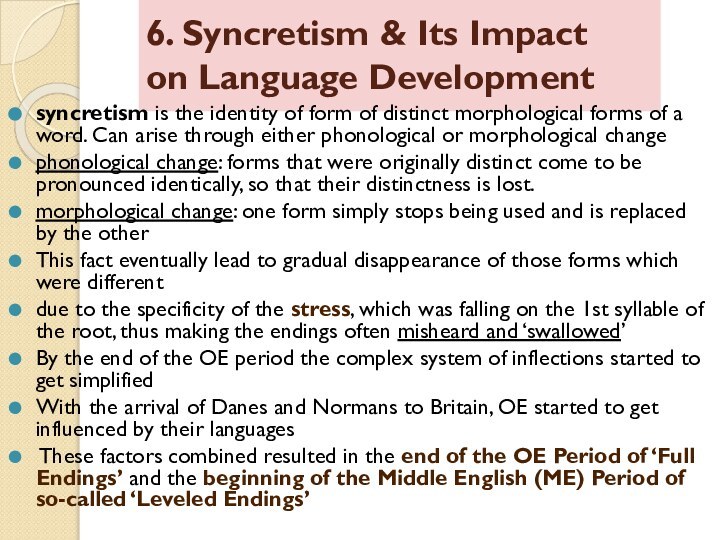
Слайд 2
Typological classification (19th)
A. Schleicher
W. von Humboldt
deals with
grammatical structure of the languages
Слайд 3
isolating
Chinese and Vietnamese
each lexical or grammatical unit of
information is carried by an individual morph, without affixation
or modification.Eg.: Georgian: Miq’varkhan. – I love you.
Слайд 4
agglutinating
Turkish
morphs are ‘stuck’ together to form words.
Each morph has a particular function.
Слайд 5 All IE languages are Inflecting
Synthetic & Analytical
Synthetic structure of the language presupposes that both semantic and grammatical meaning of the word is expressed within one word
synthetic means:
grammatical suffixes,
grammatical prefixes,
vowel interchange,
suppletive formation
Eg.: Ukr: Коти їдять мишей.
Мишей їдять коти.
Analytical structure of the language presupposes that lexical and grammatical meanings are expressed by 2 or 3 grammatical units.
analytical means:
articles,
conversion,
auxiliary verbs,
conjunctions,
pronouns,
word order.
Eng: Cats eat mice.
Mice eat cats.
Слайд 6 Modern English has both analytic characteristics
and synthetic ones
Eg.:
I will see you tomorrow;
He
is sleepingMore beautiful – uglier
Good – better – the best
Слайд 7 OE morphology is different from that of Modern
English, predominantly by being much more highly inflected
Among living
languages, OE morphology most closely resembles that of modern Icelandic and to a lesser extent that of modern High German
Слайд 8
2. Grammatical Categories of the Noun in OE
What
are the grammatical categories of the NOUN in Modern
English??????In OE:
Gender (masculine, feminine, neuter)
Number (singular and plural);
Case (Nominative, Genetive, Dative, Accusative,
Instrumental)
It has to be noted that Gender is a lexico-grammatical category, while the other two are purely grammatical. Gender is not associated with ending nor with lexical meaning.
Слайд 9
OE declensions
STRONG :
-a-stem
-o-stem
-u-stem
-i-stem)
WEAK
(-(e)n- consonantal)
ROOT
By the 9th
century, the original vowels or consonants in the noun-stems
had disappeared (so that PG a-stem *skipa ‘ship’, for example, appears in OE as scip). The declension type has to be checked up in a dictionary!!!
Слайд 14
Degrees of Comparison
Suppletive forms:
Eald – ieldra – ieldest
(old)
heah – hierra – hiehst (high)
lǻnȝ - lenȝra -
lenȝest (long)ȝōd – betera – betst (good)
yfel – wiersa – wierst (bad)
lytel – læssa – læst (little)
micel – mara – mæst (big)
Слайд 17 SE was used for far objects. The meaning
of this pronoun is often weakened so that it
approaches the status of an article. þES was used for near objects.Слайд 18 DEFINITE: ȝehwa (every); ȝehwilc (each); ǣȝƀer (either); ælc
(each); swilc (such) – all these pronouns were declined
as strong adjectives.Sē ilca (the same) was declined as a weak adjective.
INDEFINITE: Sum (some), ǣniʒ (any) were declined as strong adjectives.
NEGATIVE: Nān, nǣniʒ were declined as strong adjectives.
RELATIVE: ƀe, sēƀe > sē is inflected according to gender, number, case, whereas ƀe remains unchanged.
Слайд 19
5. OE Verbal Grammatical Categories
Number (Sg, Pl)
Person (1st,
2nd, 3rd with no person distinctions in PL)
Tense (Present,
Past, the future is expressed by lexical means)Mood (Indicative to state an action as real, Imperative expresses order, request and wish, Subjunctive to express an action that is merely supposed)
NO grammatical category of voice. Passive meaning is rendered by free word combinations.
Слайд 20
(A) STRONG VERBS
divided into 7 classes according to
vowel gradation (ablaut)
now are called irregular
Слайд 22
(B) WEAK VERBS
While there were 4 classes of
Weak Verbs in Gothic, in OE there were 3
Every
weak verb is characterized by 3 forms: infinitive, past tense and Participle IIthe Past Plural can be derived from the Past Singular by replacing the e ending of the Singular by the on ending of the Plural
The stem of the Participle II is always identical with that of the Past tense.
Слайд 24
II Class
These originally had the suffix *-ōja in
the infinitive and -ō- in other forms
In OE o
has been preserved in the past tense and PII and has been changed into a in some forms of the present tenseThe infinitive suffix *-ōja has been reduced to i, the Infinitive of these verbs ends in ian.
(The absence of mutation in the Infinitive is due to the fact that the i (from *-ōja appeared at the time when the process of mutation was over)
Слайд 26
(C) Preterite-Present Verbs
Historically, Preterite-Present Verbs are strong
PP Verbs
are verbs in which Past Sg is reconsidered as
Present and the new Past form is built with the help of the dental suffix
Слайд 29
+ be̅on ‘to be’ suppletive paradigm
The modern forms
of this verb – both past and present –
seem to follow no discernible pattern whatsoever, because they derive from four historically unrelated verbsEom, is and sindon/sind/sint forms ultimately derive from a PIE root *es- (with the forms *esmi, *esti, *senti)
Eart comes from another PIE root *er-, meaning ‘arise’
Be̅o/ bist/ bið/ be̅oð from *bheu- which meant ‘become’
The preterite forms are derived from OE wesan.


